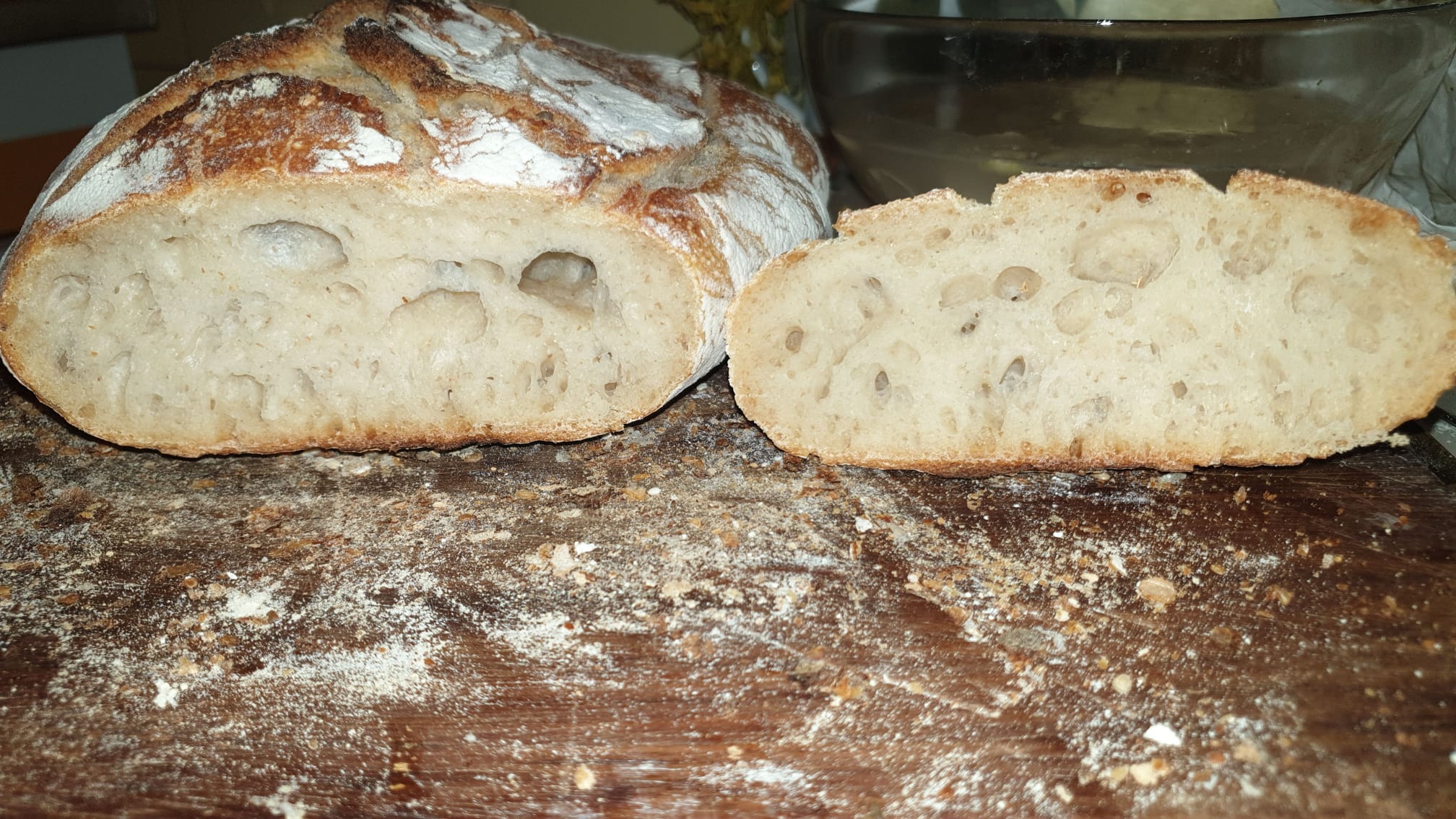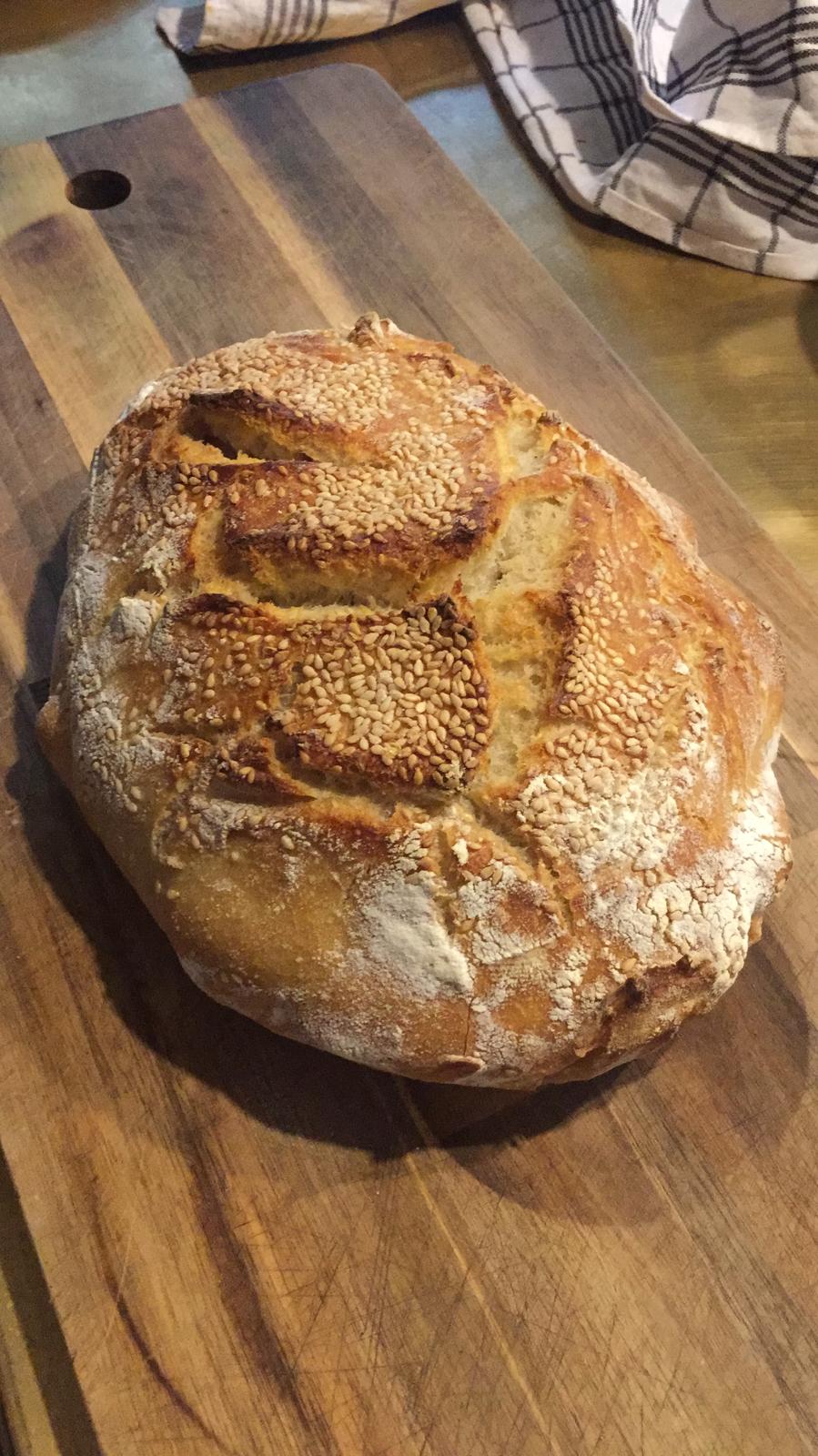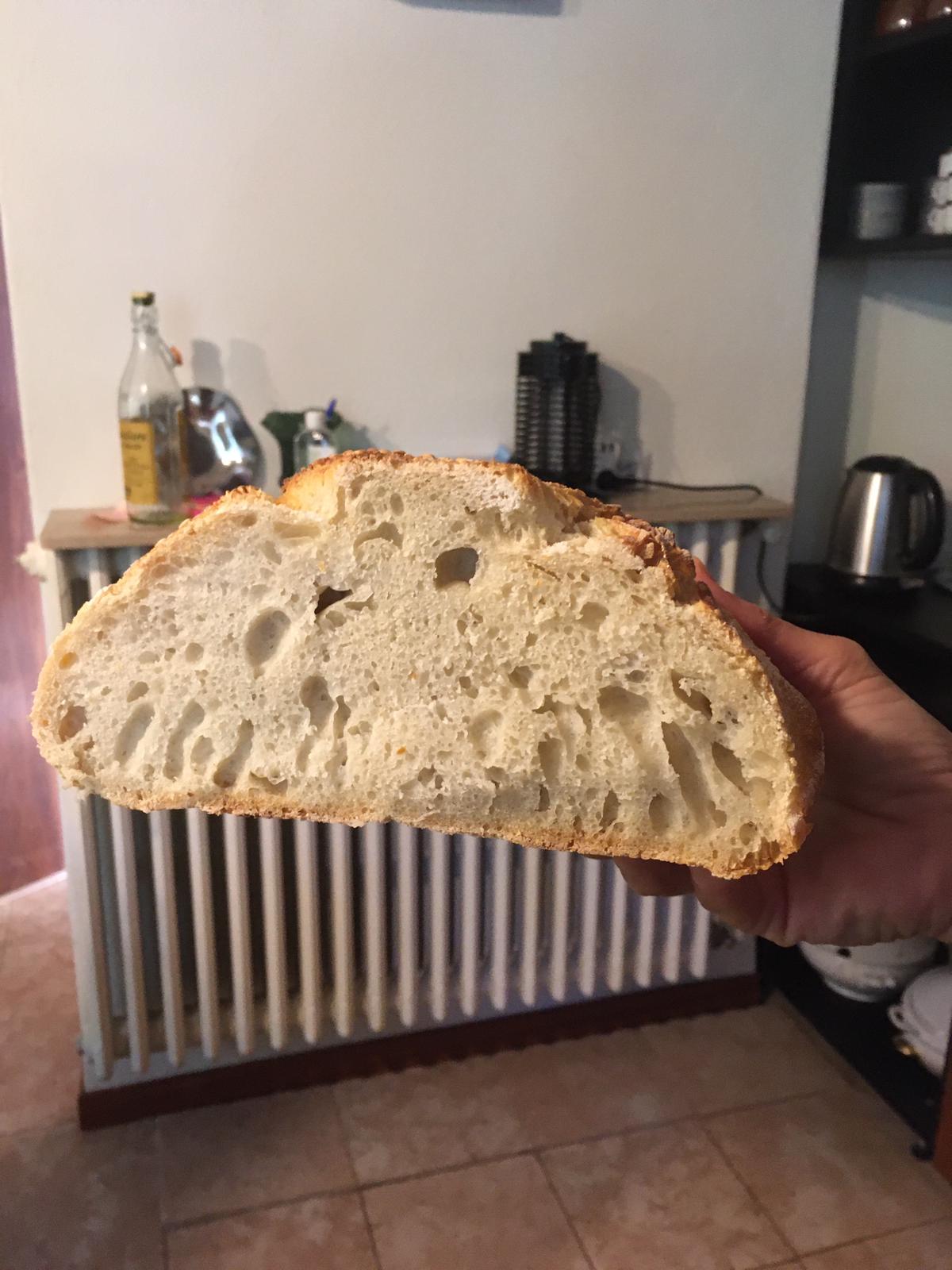I've had now several attempts at Stretch and Fold technique and i just can't seem to get it to develop my do even after 6-8 hours (with S&F every 30 min) it is still tearing when i go for the windowpane.
I've tried this with several Sourdough BK. 20% 100% and some inbetween.
the even weirder part is that I still baked them (after letting them proof over night in the fridge) got a decent bread. It has risen and the crumb was pretty open with medium bubble.
I have no idea what might I be doing wrong.
If you have done six folds, that is probably enough. I doubt that you are doing anything wrong, except, possibly, the windowpane test. I seldom use this test.
Ford
There are different levels of development. Most doughs do not need to go to a full, strong, thin windowpane. Often it is more ragged. Also, the act of testing for a windowpane is often done too quickly or with too much force. It is a gradual stretching of the dough (think making pizza rather than pulling taffy).
Here is a good illustration of the stages of development:
http://www.wildyeastblog.com/gluten/
Plus, the long proofing time will further develop the gluten.
Let me add that the dough doesn't even really get tougher and still stays very wet and sticky and soft.
Also, with this method when you deflate the air each stretch and fold during the Bulk Fermentation, how can you tell when enough is enough? I normally would look for about 1.5 times its original size but here you can't.
And given the fact that I still got a decent loaf even with a wet and unmanageable dough, I really don't know how much time should I be doing the Bulk Fermentation with the Stretch and Fold.
To do some old fashioned kneading when first forming the dough to get the gluten off to a good start. I too couldn't get it with stretch and folds alone. When I started to knead and finished with stretch and folds it came together. Autolysing also helps.
I've always used lower hydration doughs, but have wanted to "get wet," so to speak, for a while. A few days ago I started with an 87% hydration regular dough and attempted Bertinet's slap-and-fold mixing technique and couldn't get it to come together until I had added more flour. I posted my story with some pics here:
http://www.thefreshloaf.com/node/44082/sharing-todays-bake
Maverick and Dabrownman gave me some really good advice about my technique (thanks Guys!!) and I made another loaf yesterday. The new loaf was as follows:
500g unbleached all-purpose white flour
350g water
50g well-fed starter
10g Kosher salt
2.5g instant yeast
The base hydration was 70%, but with the 100% starter added in, it got just a touch wetter. I did slap-and-folds until it started to come together, then laid a fine dusting of flour on the bench to set the dough ball on while I pulled the corners in to the center to tighten it up. Then it went back in the bowl for a 2-hour room-temp ferment on the bench and into the refrigerator for an overnight retard. The next morning I took it out of the fridge for an hour to warm up and, like Maverick and Dabrownman recommended, I did stretch-and-folds in the bowl from each direction, waited 40 minutes and did it again, then 40 minutes later one last time. It reminded me of childhood when my dad would show me how to do something that had been eluding me, and I would have this little chuckle that was half incredulous, half satisfaction when I saw how easy it was to do after all. I got the same little chuckle when the dough held its shape in a nice ball after the third stretch and fold.
After that, we had some errands to run that would take about 1.5 to 2 hours and I figured that would be a perfect final proof time, so I formed a nice batard and covered it with a towel. As life has a habit of doing, the time got stretched a bit and my rise time turned into 3.5 hours. When I pulled the towel back, the loaf was huge and probably just a touch over proofed. It also had a firm dry skin on it and I was afraid I had ruined it. But, determined not to waste all that time and ingredients, I brushed the surface liberally with water and made my slashes. I baked it off with steam at 450F for 35 minutes (remembered to rotate this time) and it actually came out great. The crust was crisp and crackly with a nice golden color, and the crumb was soft and tender without being gummy. I'm sorry I didn't get pictures taken this time - we devoured it way too fast.
The crumb structure was more open than on the last loaf, so I'm sure I'm on the right track. Next few I make I'll creep upward on the hydration each time now that I've got a better handle on technique. When the hydration gets too sticky, I'll incorporate Maverick's and Dabrownman's other suggestion: to have longer rest periods in the middle of the slap-and-fold mixing stage in addition to the stretch-and-folds in the bowl.
Thanks again for the help! I'll post my results.
Thank you for all your great advice here. Because of this I've now made two excellent loaves of bread where both tore every time I picked up the dought to stretch in the stretch and fold process. The dough just never developed.
Both times I used 80% hydration. Both times the dough was extremely difficult to work after stretch and fold 4-5 times, and despite tightening to let rest for 30 minutes before proving, I'd come back to a flat pancake having oozed all over the board.
I pushed on as recommended here, put it in the proving basket where it rose by may 40%, then, when I turned it out onto baking paper and lifted it into the crouset, it completely flattened like a pancake.
To my amazement, after 20 minutes lid on in the crouset, it had risen to a huge loaf! I haven't cut it yet, but I can only imagine with this rise it will have a fab open crumb.
Both times I autoylsed overnight, so next time I'm going to try autolysing for only 30-60 minutes and see if this is the reason it tears during stretch and fold. Or it's just a factor of the high hydration level.
But couldn't be happier. I almost threw the dough away before I read this post. So I can attest that a tearing dough during S&F doesn't mean anything to the eventual quality of the loaf. Believe and march on!
This pic is of my first loaf with tearing S&F. Will try to remember to post today's loaf after it's sat overnight, in the morning.
The loaf today, which I'll post tomorrow, had 500grams of flour.
The pic here was only 350g. Hence the smaller loaf.
Here's pics from the bread baked yesterday
Another inside pic